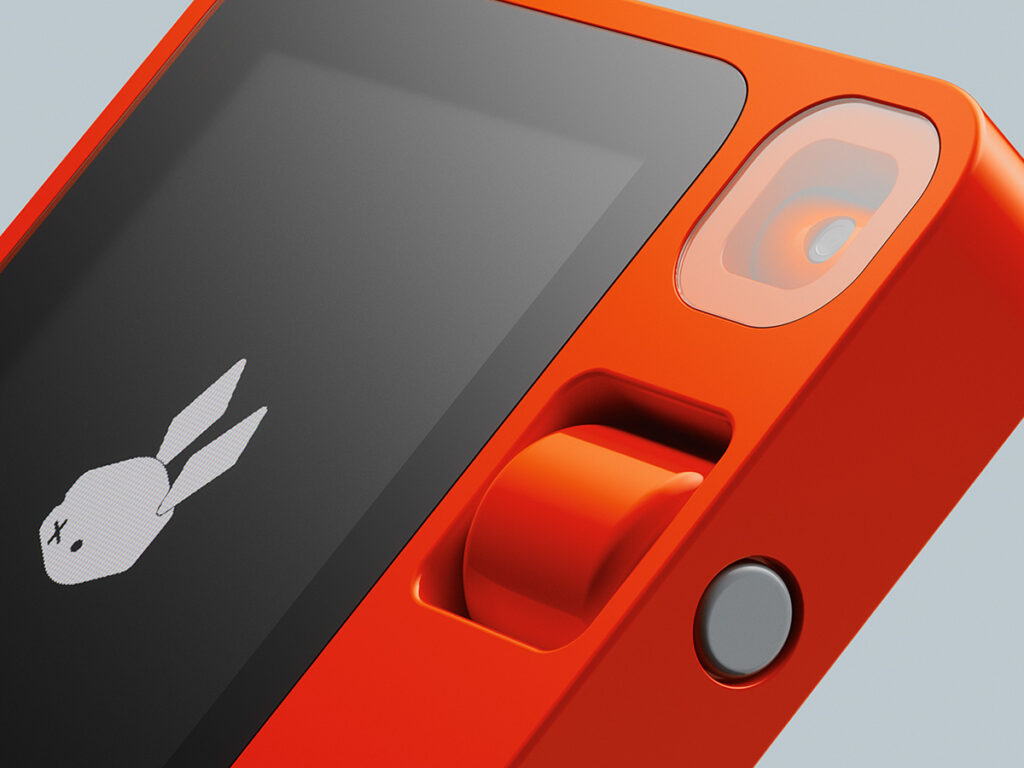
Jason Yang
Editor, WearablesWHERE TO BUY
Gigabeat provides unbiased editorial style product reviews to help you make a more informed purchase decision. When you buy from links featured on our site, we may earn a commission.
- $199.00 USD at Rabbit.tech
Introduction
The Rabbit R1 positions itself in the burgeoning market of AI-powered devices, but despite its ambitious promises, it falls short in several key areas. This review delves into the capabilities, shortcomings, and overall user experience of the Rabbit R1, providing a detailed analysis compared to existing smart home products like Amazon Alexa and Apple’s Siri.
Design and Build Quality
The Rabbit R1, designed by Teenage Engineering, features a distinctive orange plastic cube that’s lightweight and easily recognizable. It’s roughly the size of a stack of post-its and includes a single button, a built-in screen, and a USB-C port for charging. Its quirky design includes a scroll wheel for navigation, adding a unique but somewhat impractical touch to the device’s interface.

Functionality and Performance
Pros:
- Quick Responses: The device processes requests faster than some competitors, offering quicker answers to queries.
- Screen and Speaker: It includes a built-in screen that displays answers and a speaker for auditory feedback, although the quality is basic.
- Portability: Its small size makes it highly portable, fitting easily into a pocket or bag.
Cons:
- Battery Life: The Rabbit R1 suffers from poor battery performance, with a life span of about four hours on a full charge, requiring multiple charges throughout the day.
- Limited Features: The device lacks several basic functionalities such as setting alarms, timers, taking photos, or recording videos.
- High Error Rate: The AI often provides incorrect answers, undermining trust in its capabilities.
- Inefficient Navigation: The scroll wheel, while a novel feature, is cumbersome to use and lacks sensitivity, making navigation through menus slow and frustrating.
Comparison with Established Smart Assistants
Unlike established smart home devices like Amazon Alexa or Apple Siri, which are deeply integrated into broader ecosystems with extensive app support and functionalities, the Rabbit R1 feels like a step back. These existing assistants offer more reliable controls, better integration with other smart home devices, extensive features, and a more robust support network. In contrast, the Rabbit R1’s AI capabilities are limited to basic interactions and lack the depth and versatility of its competitors.
Visual Identification Technology
The Rabbit R1 includes basic health monitoring technologies, such as a swiveling camera that can identify objects and provide information about them. However, these features do not match the more advanced technologies seen in devices from Google, Amazon, and others.

Overall Recommendation
The Rabbit R1, while an intriguing concept, does not deliver a satisfactory user experience compared to its price and the competition. Its design, while unique, prioritizes form over function, leading to a device that is more of a novelty than a practical assistant.
Given the significant drawbacks in functionality, reliability, and user interface, coupled with the superior capabilities of existing products like Alexa and Siri, it is difficult to recommend the Rabbit R1. Consumers looking for a reliable and functional smart home assistant would be better served by more established options in the market.
In conclusion, the Rabbit R1’s attempt to carve out a niche in the smart device market is hampered by its many limitations. Until substantial improvements are made, it remains a product that cannot be recommended for purchase.
